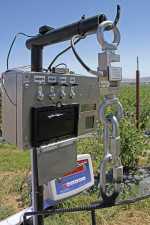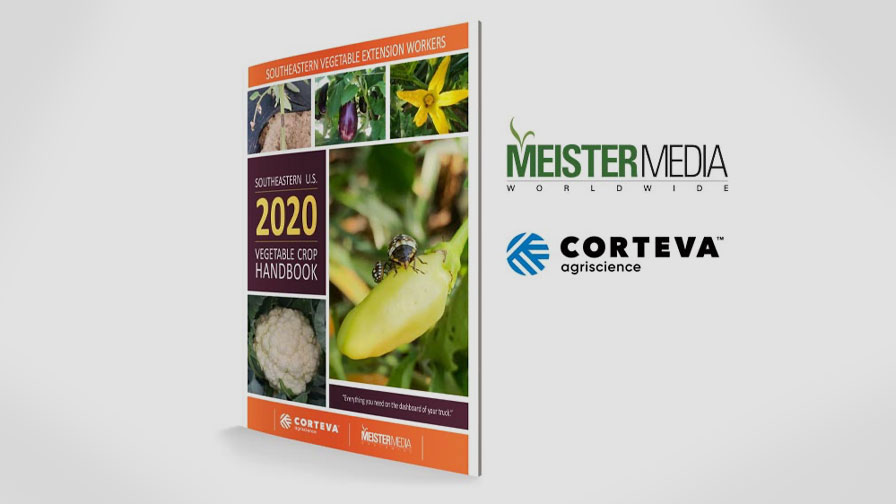Paying Fruit Pickers Per Pound

Several years ago cherry grower Mike Omeg, who is always looking for ways to do a better job and increase his bottom line, sat down and asked himself one critical question: “How can I reduce my operating costs without hurting the quality of the fruit?”
Omeg, who farms 375 acres of cherries in The Dalles, OR, considered numerous factors, but there was one that really stood out: His harvest costs were too high. He was paying pickers to fill buckets of cherries that allegedly weighed 20 pounds. The problem is, there wasn’t 20 pounds in the average bucket. Omeg knew this because he is a fastidious record keeper.
For example, this year Omeg’s crews — there are about 300 people out in the orchards during harvest, including supervisors — picked 5,234,499 pounds of fruit into 266,917 buckets. (Omeg harvests both the fruit he grows and for one other grower.) That comes out to an average bucket weight of 19.61 pounds. Because Omeg pays the pickers based on a 20-pound bucket, he figures he overpaid them by $16,135.
But that’s only the direct cost, says Omeg. There are numerous cost savings that could be realized by going with a new system. For example, the foremen who currently monitor the buckets to try and make sure they are full would be freed up for other tasks. “If I didn’t have them monitor bucket volume so closely, I could have them focus on other things such as fruit quality,” he says, “making sure the pickers aren’t too rough on the fruit.”
Uncharted Waters
Because of his predicament, Omeg was very interested when he learned of a Specialty Crop Research Initiative (SCRI) project by Washington State University (WSU) researchers to improve labor efficiency. The researchers started with a blank slate, says Matthew Whiting, a WSU stone fruit physiologist, who joined Fran Pierce, professor emeritus in the departments of Crop and Soil Sciences and Biological Systems Engineering. “We found there was no data on how fast pickers pick,” says Whiting. “Fran Pierce and I went into the orchards with a scale and tracked how fast bins would fill up.”
In the second year of the project Pierce hired Yiannis Ampatzidis, a post-doctorate research associate, who had something of a masterstroke: He incorporated RFID technology, so each picker would simply wave a wristband over a reader and would immediately be credited with the weight of fruit he dumped. The device utilizes a hanging scale, so it is self-leveling, an important factor in sloped orchards. More recently — the SCRI project is now in its fourth and final year — Li Tan, a WSU computer engineer, has enabled the system to utilize cloud technology. “That means you could follow the picking anywhere in the world,” says Whiting, “and you could integrate the data with payroll software.”
All data would be available in real time. Now, in most orchards when a picker dumps a bucket, he gets his ticket punched to receive credit. The new system can automatically spit out a ticket that credits him for picking a certain amount of fruit. The ticket can include all sorts of data, including when and where the fruit was picked, and is automatically compiled. With the current system, at the end of the day someone has to read all those punch cards. “That’s ridiculous when you think about it,” says Whiting.
All Crops Viable
So far the system has been tested only in cherries and blueberries, says Whiting, though he thinks it would work on virtually any hand-harvested crop. It might require modification for certain crops, but such work would be minor. For example, for crops like apples and pears and other crops that are picked in soft-sided totes and not hard buckets, they will be making modifications so that virtually any fruit grower can use it. “I haven’t run into one grower who doesn’t get the benefits,” he says.
For example, a blueberry grower who recently tested the system looked at records for the first week of picking and added up all the buckets. Then he compared those records with those from the warehouse where the berries were weighed. The difference between estimated and actual weight turned out to be 40,000 pounds. “It’s a 50¢ per pound picking cost,” he says, “so they would have saved $20,000 in one week.”
Whiting and Ampatzidis will be doing industry demonstrations of the weighing system through the fall, and will also be seeking out investors, says Whiting. Next they will be discussing what steps they have to take to commercialize the weighing system. It might take a couple of years before it’s available commercially, but he has no doubt they will get there, and even smaller growers will like it. “It will be affordable to virtually any grower,” he says. “We just need to do a little refinement — we’re 90% there.”
Other Benefits
Just because there are many advantages to the grower in going to a weighing system, says researcher Matthew Whiting, it does not mean that pickers are opposed to it. In fact, not a single member of the eight picking crews he has worked with had anything negative to say about it. Instead, they talked of the system’s fairness. “You bring in more fruit, you get paid more for it,” he says. “It eliminates any controversy at all.”
Grower Mike Omeg, who incidentally says he is not an investor, tried the system for half a day and happily ticked off its benefits:
• Improved Safety: Ladders aren’t moved just when buckets are full. “You don’t have to climb the tree to fill that bucket,” he says. “You just dump it when it’s convenient, not when it’s full.”
• Less Management/Picker Friction: Some pickers have been known to fill a bucket most of the way and then give the bucket a couple of jolts to fluff up the fruit on the bottom that has settled. “Like when you buy cereal and it always says ‘Product settles during shipping,’” he says. “Getting pickers to fill buckets is always a source of animosity between management and harvest labor, but with this system it doesn’t matter how full the bucket is.”
• Less Picker/Picker Friction: Pickers often think that one picking team has a bin checker who’s not making them
fill their buckets. “That creates some discontent among harvest crews because they think it’s not fair. And if there is a picking team that is allowed to fill their buckets less than the other teams, it’s not fair,” he says. “The scale standardizes things — you’re paid by the pound and there’s no debate.”
• Better Quality: Bin checkers will be able to focus 100% on fruit quality, which will have a big impact, especially on heavy production days. “On the days when we pick lots of fruit we get more cullage than on days when it is slow,” he says. “The conclusion I drew is that when it’s slow, the bin checkers had more time to evaluate the fruit and ensure pickers aren’t damaging it by picking too quickly.”
• Yield Mapping: The system is constantly yield mapping, which is certainly beneficial to any grower, but it is also yield mapping in real time. “That’svaluable to me, but it’s even more valuable to the sales staff because they know exactly how much fruit to sell so they don’t over-sell or under-sell that day,” he says. “Because in the cherry business a day is a huge amount of time — it’s fast and furious!”









